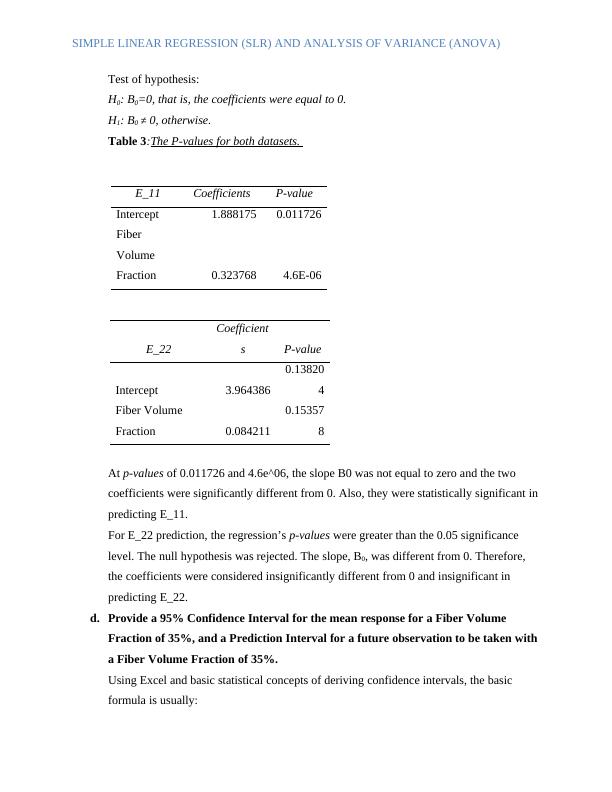THE SIMPLE LINEAR REGRESSION
In this final Group Report, you are asked to look at the data under the tabs labelled 'Young's Moduli' and 'Thermodynamic Properties' in the dataset called 'SS 2143 datasets'. You will use the techniques of Simple Linear Regression (SLR) and Analysis of Variance (ANOVA) to achieve these goals.
11 Pages1622 Words8 Views
Added on 2022-08-29
THE SIMPLE LINEAR REGRESSION
In this final Group Report, you are asked to look at the data under the tabs labelled 'Young's Moduli' and 'Thermodynamic Properties' in the dataset called 'SS 2143 datasets'. You will use the techniques of Simple Linear Regression (SLR) and Analysis of Variance (ANOVA) to achieve these goals.
Added on 2022-08-29
ShareRelated Documents
End of preview
Want to access all the pages? Upload your documents or become a member.
Statistics Study Material
|6
|723
|74
APPLIED MANAGERIAL STATISTICS
|10
|1265
|18
Regression Analysis | Assignment-1
|7
|872
|19
Comparing Z-scores | Statistics and Probability -
|6
|980
|18
STA510 Business Statistics Assignment Solution
|6
|1597
|198
SIimple & Multiple Regression Model
|10
|600
|67




